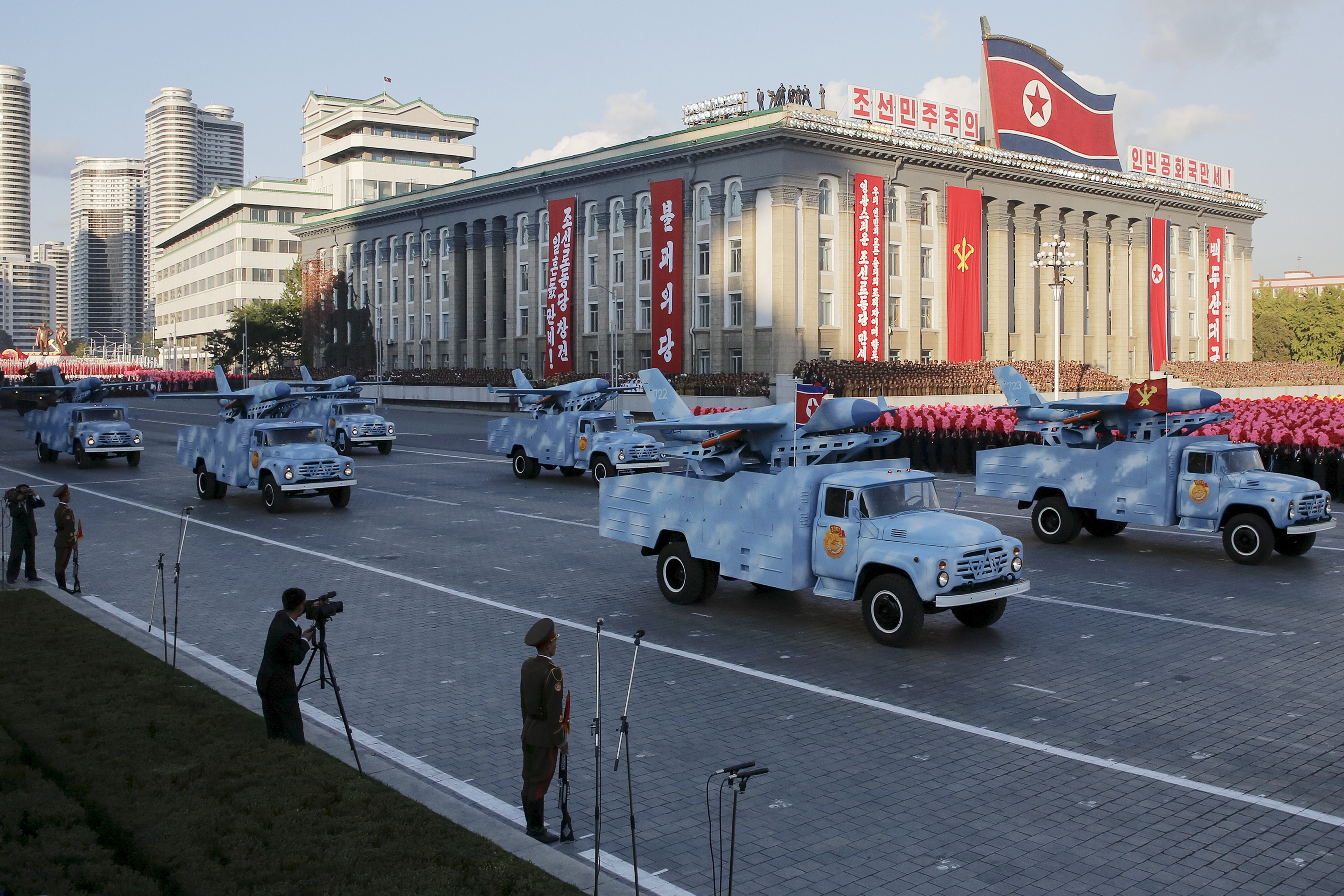
By Christine Kim and Mark Hosenball
(Reuters) – North Korea fired a ballistic missile that landed close to Japan on Wednesday, the first test by Pyongyang since a missile fired over its neighbor in mid-September, officials said.
North Korea launched the missile a week after President Donald Trump put North Korea back on a U.S list of countries that Washington says support terrorism. The designation allows the United States to impose more sanctions, although some experts said it risked inflaming tensions on the Korean Peninsula.
Japan’s government estimated that the missile flew for about 50 minutes and landed in the sea in Japan’s exclusive economic zone, Japanese broadcaster NHK said. An Aug. 29 missile fired by North Korea that flew over Japan was airborne for 14 minutes.
South Korea’s Joint Chiefs of Staff said Wednesday’s missile was fired from Pyongsong, a city in South Pyongan Province, at around 1817 GMT over the sea between South Korea and Japan.
Minutes after the North fired the missile, South Korea’s military conducted a missile-firing test in response, the South Korean military added.
The Pentagon said it had detected a “probable” missile launch from North Korea.
“We detected a probable missile launch from North Korea. We are in the process of assessing the situation and will provide additional details when available,” Pentagon spokesman Colonel Robert Manning told reporters.
Leading Japanese newspaper Asahi Shimbun quoted an unidentified government official as saying the missile did not cross over Japan and it fell into the Sea of Japan or on the Korean peninsula.
The White House said U.S. President Donald Trump was briefed while the missile was still in the air.
South Korean news agency Yonhap, citing South Korea’s Joint Chiefs of Staff, said the missile flew to the east and the South Korean military was analyzing details of the launch with the United States.
U.S. stocks pared gains after reports of the missile launch. The S&P 500 index was up half a percent in midafternoon.
Two authoritative U.S. government sources said earlier that U.S. government experts believed North Korea could conduct a new missile test within days.
After firing missiles at a rate of about two or three a month since April, North Korea paused its missile launches in late September, after it fired a missile that passed over Japan’s northern Hokkaido island on Sept. 15.
The U.S. officials who spoke earlier declined to say what type of missile they thought North Korea might test, but noted that Pyongyang had been working to develop nuclear-tipped missiles capable of hitting the United States and had already tested inter-continental ballistic missiles.
Last week, North Korea denounced Trump’s decision to relist it as a state sponsor of terrorism, calling it a “serious provocation and violent infringement.”
Trump has traded insults and threats with North Korean leader Kim Jong Un and warned in his maiden speech to the United Nations in September that the United States would have no choice but to “totally destroy” North Korea if forced to defend itself or its allies.
Washington has said repeatedly that all options are on the table in dealing with North Korea, including military ones, but that it prefers a peaceful solution by Pyongyang agreeing to give up its nuclear and missile programs.
To this end, Trump has pursued a policy of encouraging countries around the world, including North Korea’s main ally and neighbor, China, to step up sanctions on Pyongyang to persuade it to give up its weapons programs.
North Korea has given no indication it is willing to re-enter dialogue on those terms.
North Korea defends its weapons programs as a necessary defense against U.S. plans to invade. The United States, which has 28,500 troops in South Korea as a legacy of the 1950-53 Korean war, denies any such intention.
(Reporting by Christine Kim in Seoul, Linda Sieg and William Mallard in Tokyo, Mark Hosenball and Tim Ahmann in Washington; editing by Dan Grebler and Grant McCool)







